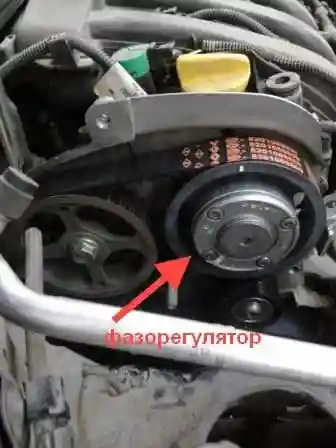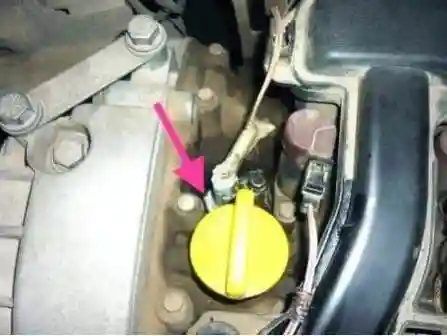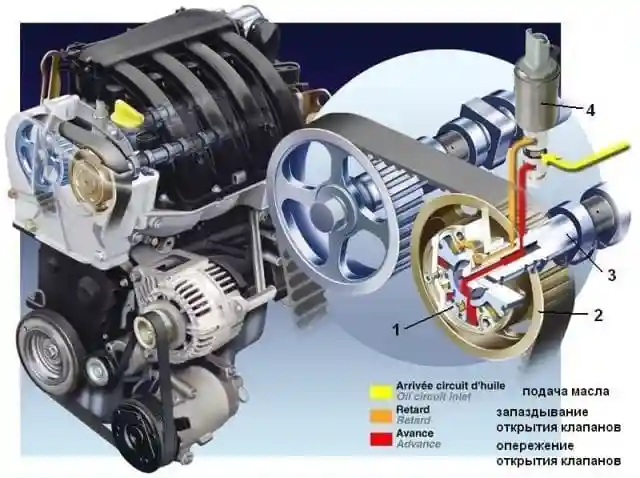To improve the filling of cylinders with a fuel mixture in all modes, 1.6l engines are equipped with an intake camshaft dephaser.
Shifting the closing timing of the intake valves optimizes the filling of the cylinders with the fuel mixture depending on the speed of the crankshaft.
The result is increased torque at medium loads and power at high engine speeds.

At a high engine speed, closing the intake valves later provides an additional portion of the fuel mixture due to the high speed of the mixture.
On the contrary, at a low speed, the inertia of the mixture is small.
Earlier closing of the exhaust valves is therefore desirable to avoid underfilling of the cylinders and loss of torque due to the displacement of some of the fresh mixture.
The higher the engine speed, the later the intake valves should close.

The amount of oil supplied to the phase regulator is determined by the solenoid valve mounted on the cylinder head (see fig. 2).
The valve is energized in the form of a variable signal of the degree of cyclic opening (amplitude 12 V and frequency 250 Hz).
This allows you to supply oil to the phase regulator mechanism and thus change the phase angle.

The camshaft phaser constantly changes the valve timing.
The electronic control unit sends to the solenoid valve a variable signal of the degree of cyclic opening, the magnitude of which is proportional to the required phase shift.
The phases constantly change from 0˚ to 43˚ in the angle of rotation of the crankshaft.
When the crankshaft speed is between 1500-4300 min-1, the computer supplies power to the solenoid valve.
When 4300 min–1 is exceeded, the solenoid valve is de-energized.
At the same time, the position of the phase regulator mechanism contributes to filling the cylinders at a high crankshaft speed.
In this position, the locking plunger blocks the mechanism.
At speeds up to 1500 min–1, no voltage is applied to the solenoid valve.
The mechanism is blocked by a plunger.
From the moment power is applied to the solenoid valve at a crankshaft speed of more than 1500 min–1, under the action of oil pressure, the shut-off plunger moves away and releases the mechanism.
The camshaft dephaser solenoid valve is controlled under the following conditions:
- - crankshaft speed sensor is OK;
- - camshaft position sensors are working;
- - the injection system is working;
- - after starting the engine;
- - The engine is not idling when the accelerator pedal is depressed;
- - the threshold value of the injection profile is received, which is set taking into account the load and the crankshaft speed;
- - coolant temperature is within 10 - 120˚ С;
- - elevated engine oil temperature.
Backup Modes:
- - return of the phase regulator to its original position;
- - zero phase shift.
Note. When the solenoid valve is blocked in the open position, the engine idling is unstable, the pressure in the intake pipe is increased.
More noisy engine operation is noted.
Main malfunctions of the phase regulator solenoid valve:
- - open circuit;
- - short to ground or +12V;
- - offset or mismatch of programmed values;
- - incorrect determination of the position of the phase regulator;
- - the amount of regulation is out of range.





